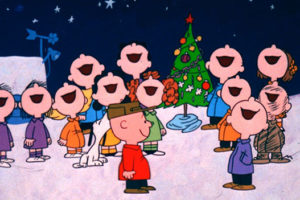Top 10 Fan Theories in Film & Literature: Part 2 by Connor Bethel
Last week, we took a look at Numbers 10 – 6 of the Top 10 Fan Theories in Film and Literature. Click here to check out the article if you missed it. This week, we return with numbers 5 – 1.
- Blade Runner: Deckard is a Replicant
The Film: Ridley Scott’s sci-fi classic tells the story of Rick Deckard (Harrison Ford), a special police officer – a Blade Runner – who hunts down rogue robots called Replicants that look like humans. Set in a dystopian future (that’s interestingly set to happen three years from now), the film is one of Scott’s best (which is saying a lot), featuring themes about what truly makes us human as antagonist Roy Batty (Rutger Hauer) and the other Replicants pursue only additional life, a desire not dissimilar from our own species. Add in a subplot involving a Replicant with artificial memories that thinks its a human, and it’s easy to see why this is film is often considered to be the best cinematic Philip K. Dick adaptation of all time.
*Spoilers follow*
The Theory: Deckard is a Replicant.
The Evidence: This one is pretty straight forward in terms of the evidence. Aside from the implications of almost perfectly human-like Replicants with fake memories, the crux of this theory occurs at the very end of the film. Deckard, having defeated Batty and the other Replicants, returns to his apartment to run off with Rachel (Sean Young), a Replicant with artificial memory implants, he has somewhat fallen in love with. As he and Rachel leave his apartment, he finds an origami unicorn on the ground near his door, left by another Blade Runner named Gaff (Edward James Olmos), which calls back to a dream Deckard had about a unicorn earlier in the movie (at least in the final cut).
So how does this make Deckard a Replicant? How else would the other Blade Runner know to do that? The complete theory states that Deckard is the Replicant replacement for Gaff’s’ character. Throughout the film, Gaff is shown not only making origami figures, but he has a cane and walks with a limp. He also very clearly does not like Deckard, implying some sort of history between the two. That combined with Gaff knowing about Deckard’s dream strongly implies that the memories that Deckard has about being a Blade Runner are actually Gaff’s. Scott also said a few years ago that Deckard was a Replicant, though Ford has said that Scott told him during production that Deckard was not. The fan’s will just have to decide.
- The Dark Knight: The Joker is a War Veteran
The Film: The best superhero film ever (sorry Avengers fans, but it’s true), Christopher Nolan’s superhero epic follows Batman as he fights the devious and psychotic Joker, who plans to bring Gotham to its knees and show Batman and the world that everyone is as sick and twisted as he is. Throughout the film, he is shown being using several different weapons from guns and knives to explosives and pencils. He is also proficient in hand to hand combat as he manages to fight the Gotham police as well as Batman.
The Theory: The Joker is a war veteran who is looking for vengeance against the government.
The Evidence: Aside from the Joker’s skills with weapons, his actions and attitude alludes to a much deeper backstory. When he pushes Harvey Dent over the edge, he casually mentions that the public will not panic too much if he kills a gangbanger or a truck full soldiers in a very nonchalant way. His attitude toward that scenario suggests that what drove him to the edge was exactly that: he was involved in a war, almost died, and received no support or honors upon his return.
This could even explain his scars. The Joker tells his origin story in different ways, first by saying that his abusive father is responsible for his scars, and then proceeding to later explain that he did it himself to appeal to his wife. It’s entirely possible that he is a former soldier who was seriously wounded in an attack, and is suffering from some kind of mental illness, manifesting in a serious grudge against those he deems responsible. He also has an aversion to greed that he laments towards the various mob bosses’, finding their desire for wealth as a weakness to the point where he burns a giant pile of money; all, as he says, “to send a message.”
- The Lord of the Rings: Gandalf Planned to Use the Eagles
The Film: Peter Jackson’s adaptation of the sprawling epic tells the story of a young hobbit named Frodo, who is tasked with destroying an ancient ring of evil. Across three movies, Frodo and those who are sworn to protect him battle evil armies of orcs and supernatural beings in violent pursuit of the ring, in addition to contending with the ring itself.
The Theory: Gandalf planned to use the eagles to fly the ring to Mordor.
The Evidence: Just to be completely transparent, this theory only applies to the movie adaptations of The Lord of the Rings; the books have there own explanation that doesn’t apply to this conversation. In the first film, The Fellowship of the Ring, it is decided that the ring must be destroyed. Frodo will be the ring bearer, and the wizard Gandalf and seven others will help in his quest. Initially, they start their journey east over the Misty Mountains where they run into trouble as agents of evil spy on the gang and force them to take a much longer and more dangerous route; a route that Gandalf disapproves of.
So where do the eagles come in? Well, it is said in The Lord of the Rings books that the eagles live in the Misty Mountains; the same ones that Gandalf was leading the Fellowship over when complications arose. When the Fellowship’s journey is detoured to a more dangerous mountain pass, and later the dark mines of Moria, he is irritated by the fact that getting to the eagles is taking much longer. Following his apparent death in Moria, the Fellowship continues their journey on foot and finally finish it two films later. Well, you’re thinking, if that’s true, why didn’t anyone else know about his plan? Because Gandalf never told anyone else. When Frodo first begins his journey with Sam, Gandalf tells them both to be wary of agents of the enemy; birds and beasts and the like. It would make sense that Gandalf would follow that advice himself and keep his true plan a secret until absolutely necessary. His last words before his fall are “Fly, you fools!”, which is his attempt to tell them to use the eagles. Once he comes back and finds that Frodo and Sam are still on foot and the war for the ring has started, he has little choice but to help the heroes win before he can lambaste them for not flying.
- James Bond is a Code Name
The Film(s): Dating back to 1962, James Bond has been a mainstay of cinema. We all know his name, his favorite drink, his preference for fast cars and women; as well as his legendary adversaries. One of the constants about James Bond is the fact that the role is always a temporary one. Of the 24 official Bond films that have been released in the past fifty years, Roger Moore and Sean Connery are the only actors to play the role more than five times, as each iteration of Bond evolves based on the culture surrounding him.
The Theory: James Bond is not one man, but a code name.
The Evidence: The biggest evidence for this theory is the simple fact that six actors have played James Bond in the 24 official films, and all of them play the character very differently. Connery is more of a smooth ‘60s gentleman, Moore is a ‘70s sexual deviant, and the most recent Bond, Daniel Craig, is more of a man of action. So how can all of these men be James Bond? Because they’re not actually James Bond, they’re recruits and volunteers who are given the code name James Bond when they are given the call sign 007. This explains the fact that the actors and the manner of the character changes every couple of films or so. Hell, Craig’s Bond even says 00’s have a short life expectancy.
The biggest hurdle in this theory is Skyfall, as that film’s climax ended at Bond’s childhood home, with one of the supporting characters alluding to some history with Craig’s Bond. The explanation for this in the theory is that the Skyfall manner that features in the climax is not Bond’s childhood home, but an MI6 facility where pre-007 Bonds are brainwashed into believing they are the legendary spy. They save the world time and time again only to be replaced for a newer model.
- Game of Thrones: R+L=J
The Film (Series): Game of Thrones is the series that everyone loves to watch for sadistic reasons. Whether it’s the dark and brooding tone the series takes, the brutal and unexpected death scenes, or the ultimate shock value the series force feeds its audience, the series has remained incredibly popular despite seemingly weekly promises by several fans to stop watching. Anyway, the basic story sees several houses battle for control of the Iron Throne, giving them absolute power over what is essentially an entire continent. Violence, sex, and dragons occur.
*Major spoilers (through season 6) ahead*
The Theory: Jon Snow is a Targaryen.
The Evidence: The crux of this theory states that Jon Snow is not the bastard son of Ned Stark, but his nephew. Jon is the child of Lyanna Stark and Rhaegar Targaryen, conceived during their affair that started Robert Baratheon’s rebellion. A lot of the evidence for this theory ultimately comes from the books, but they are present in the show as well. One of the main pieces of evidence is the way that Rhaegar Targaryen is viewed by the characters. Robert and the people who fought for him talk of Rhaegar as a rapist who kidnapped Lyanna against her will. Those who fight with Rhaegar’s sister, Daenerys, paint a different picture, as they say he was kind and generous.
The key piece comes when Ned Stark finds his sister in a bed of blood in a place called the Tower of Joy, which is guarded by some of the finest members of Rhaegar’s king’s guard. The theory states that when Ned Stark reaches his sister in the tower, she is already dying due to complications from child birth, and makes Ned promise to protect her son from Robert Baratheon, which leads Ned to claim that the child is his bastard son from an unknown wench. The evidence can easily be seen through the show as any mention of Rhaegar, Lyanna, and Jon Snow’s mother usually bring about differing reactions, from knowing looks to shameful avoidance. So is this theory true? Yes, it is. The most recent season (6 at the time of writing) confirmed this theory in its finale as Bran Stark saw the young version of his father make the promise to protect Lyanna’s son Jon. The reveal that this is a true theory is ultimately why it takes the top spot on this list, as fan obsession created a theory so plausible it ultimately turned out to be true.
Thanks for reading, and be sure to click the logo below to check out our Short Fiction Collections, available for just $2.99 on Amazon!

Click the logo to go straight to our Amazon page and check out our Short fiction Collection, Volumes 1 – 3!









Most Commented Posts